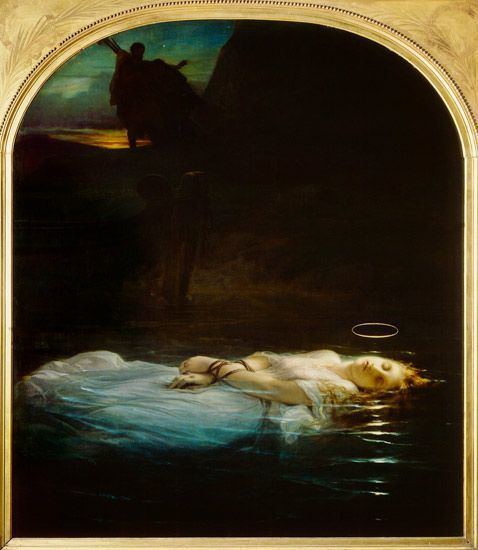Year 1855 Created 1855 Genre History painting | Period Romanticism | |
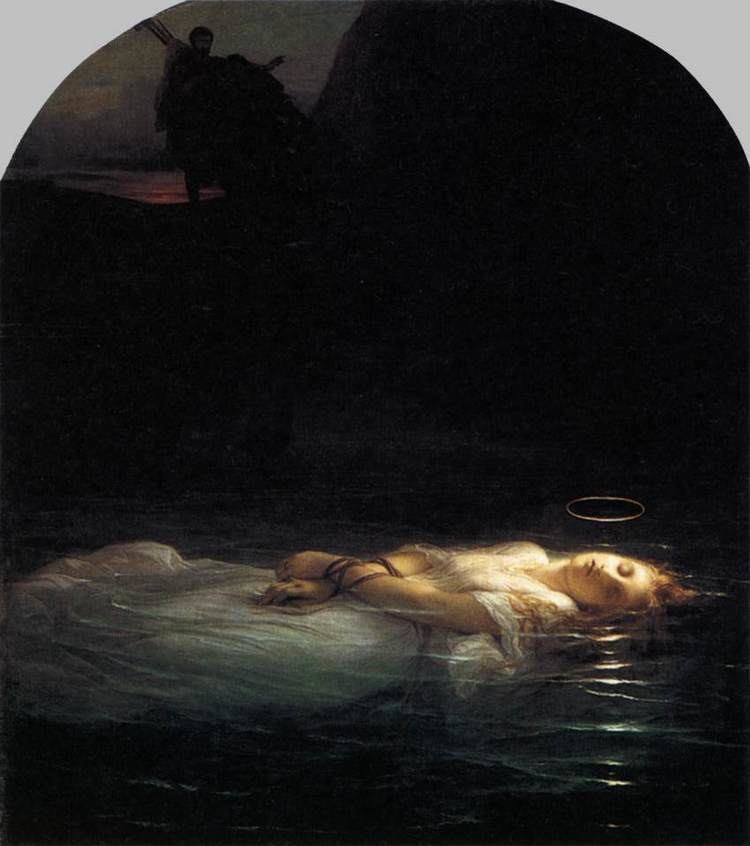 | ||
Similar Paul Delaroche artwork, Romantic artwork, History paintings | ||
The young martyr neale schofield 18 jan 2014
The Young Martyr (French: La Jeune Martyre) is an oil painting by the French painter Paul Delaroche. It was completed in 1855 and is based on the Romantic style of genre painting.
Contents
- The young martyr neale schofield 18 jan 2014
- Penumbra the young martyr
- Dimensions and characteristics
- Details
- Possible narratives
- References

The Young Martyr represents both Delaroche's emphasis on historical accuracy and flair for drama and emotionality in painting as The Young Martyr depicts the historical martyrdom of a Christian, while, at the same time, an otherworldly halo, emanating above the Martyr’s forehead, emphasizes the painting’s dramatic, emotional effect.
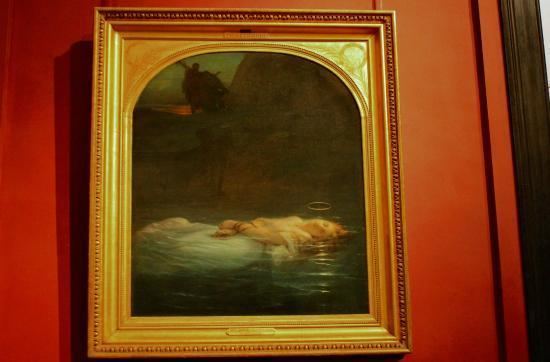
Penumbra the young martyr
Dimensions and characteristics
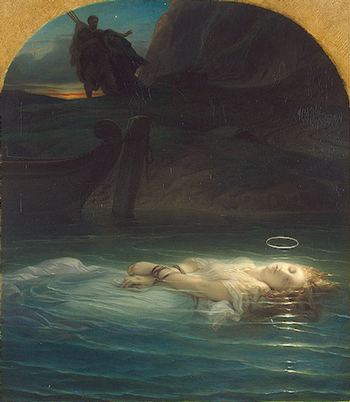
The Young Martyr is 67.3×58.3 inches, or 4 ½ feet wide and 5 feet tall. Although the painting is rectangular, the top of the painting is circumscribed in an ovular, golden frame.
Details
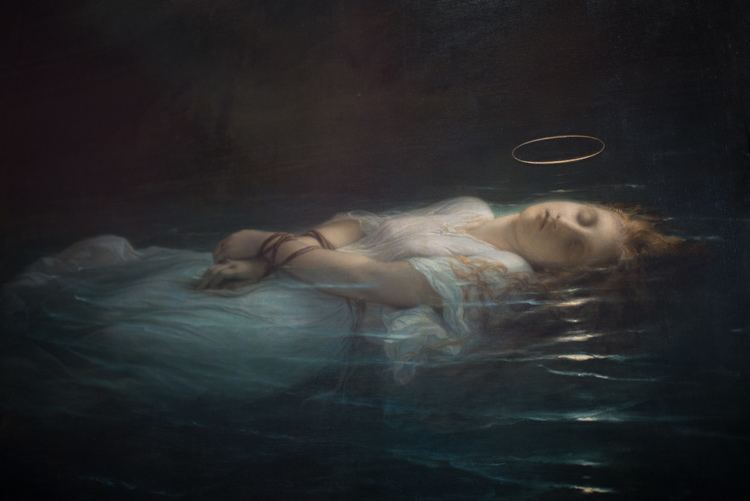
Oil was Paul Delaroche’s medium of choice when painting The Young Martyr, as oil allowed him to manipulate the precise details in the painting over a long period of time, and, therefore, capture a high level of detail for “the appearance of the highest finish.” As such, “the dignity of forms, the striking effect of the chiaroscuro, and those bluish grey tones which seemed to suit so well the touching sadness of the subject,” in The Young Martyr truly begin in the upper left hand corner of the painting, where a viewer can just barely make out the figures of a man and a woman, embracing each other in terror upon seeing the drowned Christian. Although the identity of the figures is unclear, it is generally thought that they are the young Christian’s parents. To continue, as the sun sets behind the couple, the last rays of light point directly across the painting towards the Martyr. Also in the upper left hand corner of the painting, a faint white star can be seen in the sky, just above the grieving couple. It is important to note the presence of this star in the painting as its inclusion may allude to other historical or religious narratives. For example, if The Young Martyr was painted as a morning scene, with the rising sun in the far background, the faint star above the grieving parents may allude to the morning star, or Lucifer, from the Bible. As such, this star would suggest the presence of the Devil, or of evil (metaphorically) in the painting. On the other hand, if The Young Martyr was painted as a scene taking place at sunset, then the star in the left hand corner could be seen as the North Star, and, therefore, possibly as an allusion to God or Jesus. Moving on to the Martyr herself, with her hands bound by rope, we see the young Christian gently floating upon the surface of the Tiber. With her body erect (potentially suggesting the rigor mortis), the Martyr, sublimely, appears both dead and alive. Here we can specifically take note of Delaroche’s attention to detail in that, just around the Martyr’s left hand, we can see small, painstakingly delineated ripples, barely emanating from around the crests of the Martyr’s fingers. Moving on, directly above the head of the Martyr is a halo. The Martyr’s halo, almost mathematically precise and crisp, appears surreal in contrast to the rest of the painting; furthermore, this halo helps to stage The Young Martyr as it exists as the primary source of light for the otherwise dimly lit Christian.
Possible narrative(s)

On the surface, The Young Martyr depicts the sacrifice of a young Christian woman into the Tiber River. However, what the painting alludes to is not merely the countless Christian martyrs throughout the centuries, but specifically the martyrdom Christians under the rule of the Roman emperor Diocletian- when Christians were systematically persecuted for their religious beliefs. Briefly, the Roman Emperor Diocletian ruled in the 3rd and 4th century. About nineteen years into his reign, however, Diocletian, a polytheist, instituted the systematic persecution of Christians with the Diocletianic Persecution of 303-311 AD. Under these laws, Christians were expected to sacrifice and honor gods they themselves did not believe in, under penalty of imprisonment or death. As such, although the painting of The Young Martyr does not overtly allude to Diocletian, it could easily be said that, since the Diocletianic Persecution of Christians is so well known in history, and so often cited in Art, the Persecution would have served as a firm foundation for Delaroche, artistically, and would have given Delaroche ample reason to paint the martyrdom of a young Christian. It should also be noted, however, that Delaroche opted to depict the martyrdom of a "female" Christian in The Young Martyr. Although Delaroche is known to have “introduced the genii or muses, who symbolize or reign over the arts,” and to have often idealized female figures, the choice to depict the martyrdom of a young woman may, more truly, have been part of Delaroche’s response to the death of his wife, Louise Vernet, in 1845, whom he was known to have included as a figure in many of his paintings, for homage.
